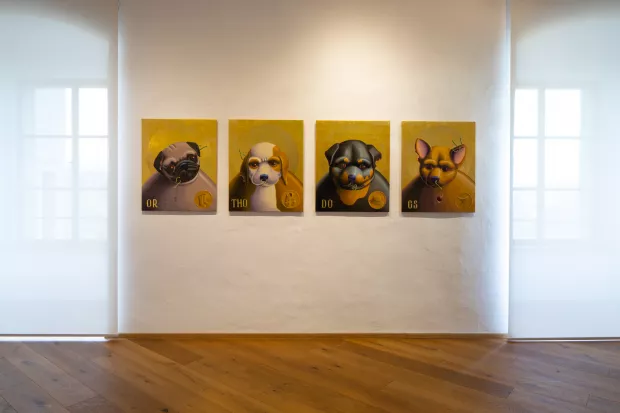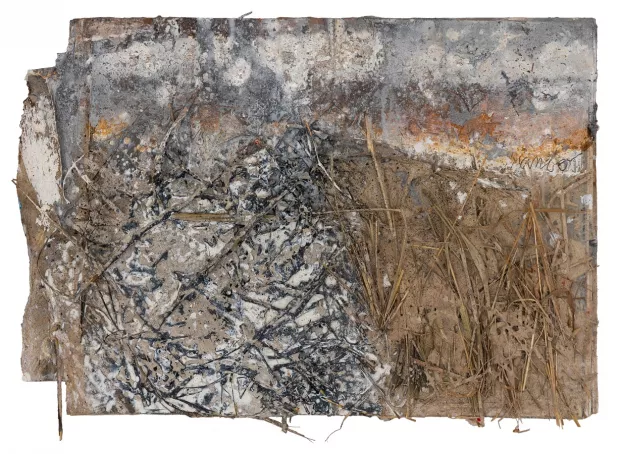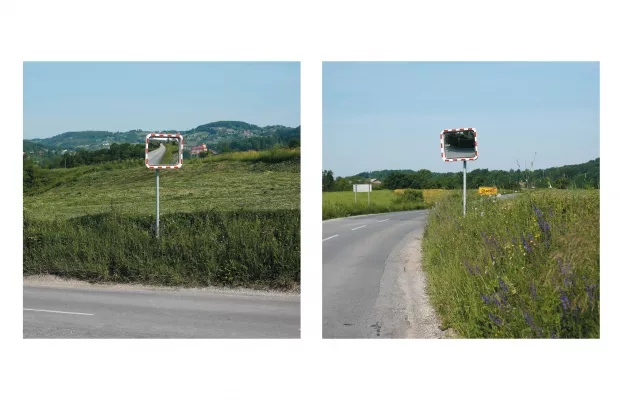About the Work of Boštjan Kavčič
Boštjan Kavčič belongs to the middle generation of Slovenian artists who began his art career at the Academy of Fine Arts in Ljubljana. In the past, he has worked with new media and carried out artistic actions and interventions in public spaces with a socially engaged touch (e.g. Garden Park, 2009; Let's Garden!, 2022; Run for Art, 2007; Made in Venice, 2005; Artificial Ecosystems I, 2001). He was one of the first Slovenian artists to design simple robots with which he drew attention to the reality of life in a digitalised society that causes a loosening of interpersonal relationships (Cubot 2.0, 2002; Rombot 1.0, 2002). At the same time, sculpture guided by the mastery of matter, creative sovereignty, intuition and the conditions of creation finds its way into his work. However, the artist does not perceive the chosen medium in the classical sense. He consciously refrains from using new technologies and materials that pollute the already saturated environment, preferring to use reusable natural materials. His work to date is characterised by a series of works collectively entitled ORGanisms, which began in 2002 and comprises over eighty stone sculptures, sixteen of which have been created this year. In the context of the new exhibition, he is no stranger to the synthesis of sculpture and utilitarian objects, their narrative connections and positioning in historical architecture.
The starting point for the considerations in preparing the exhibition at Rajhenburg Castle was the history of the castle complex, which is heavily burdened by the tragic events of the last century. The settlement of the destitute Trappist Order in 1881 probably had a favourable influence on the castle's surroundings but was less the cause of their expulsion. In April 1941, the German Nazi authorities took over the castle and set up an exile camp in the higher buildings on the manor. Its former peace was not returned during post-war events when the castle was nationalised in 1947. It was in fact soon used as a penal institution for political prisoners with the aim of their comprehensive "re-education" (Fürst, 2016).
Kavčič approaches each space in which he exhibits his works both meticulously and intuitively. When he sets up sculptures, he does so in tune with the energy, feeling and thought that the space evokes. His curiosity is piqued by historical themes and local features. This time it has nothing to do with the inherited tradition of Tolmin, but he was attracted by the place where the Sava River meanders from the Litija-Radeče district through the Posavje plain. The artist believes that the natural energy flows of the wider surroundings and the grounds of the Brestanica castle have come to a standstill, which is why he wants to restore them to their original state with the help of natural elements, natural resources and the visitors to the exhibition.
Boštjan Kavčič works in classical sculpture, and the stones he cuts are more than just material for his work. He is on the lookout for the right piece, but it is always the latter that finds him. He marvels at the fact that stone is not just a solid substance, inanimate nature that he can shape into an associative image with the right strokes of the grinder. Geological periods of time have passed to allow it to come into being. Rain fell over billions of years, rivers eroded the surface and carried sediment into the seas. Without witnesses, the mountains rose. For the artist, a piece of stone is therefore a predisposition of an inconceivably complex fabric of the earth's history that has accumulated in the wealth of layers over so many years and has also absorbed the first organisms into itself. The artist does not shape the stone into fictitious forms but works on its surface by drawing spiral notches in it through which he restores the flow of energy.












